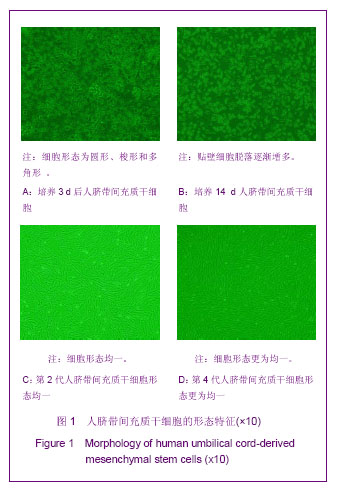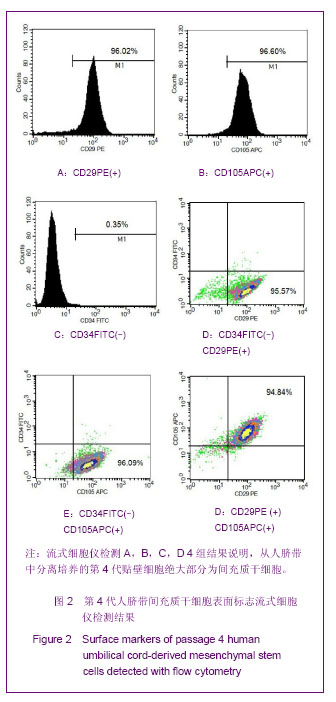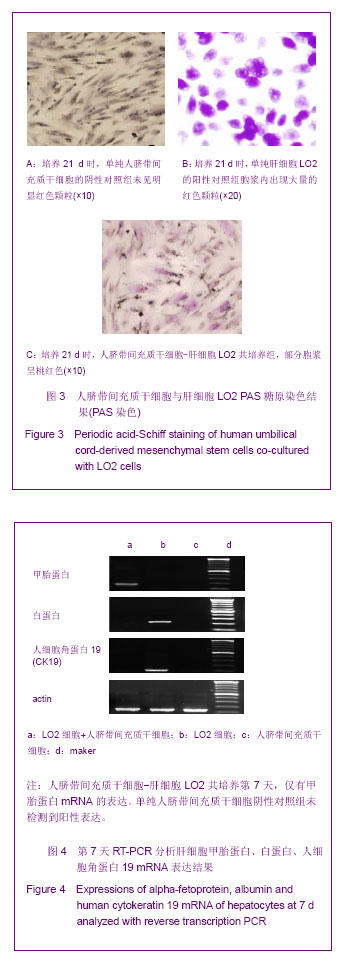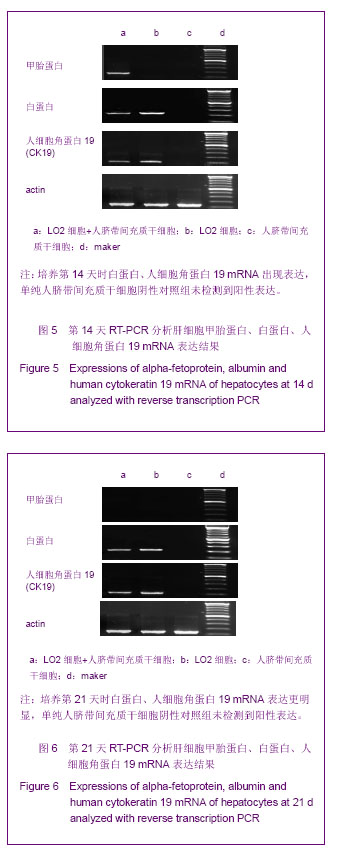中国组织工程研究 ›› 2013, Vol. 17 ›› Issue (32): 5772-5777.doi: 10.3969/j.issn.2095-4344.2013.32.005
• 脐带脐血干细胞 umbilical cord blood stem cells • 上一篇 下一篇
人脐带间充质干细胞与肝细胞共培养可分化为肝样细胞
李 华1,文 峰2,漆仲春1,周进军1,朱亚杰1,程 朋1,魏 东1,苏晓妹1,谭 勇1,彭晶晶1,罗巧丽1,李 东1,张 涛1
- 1解放军成都军区总医院肿瘤诊治中心,四川省成都市 610083
2成都医学院第一附属医院肿瘤科,四川省成都市 610513
Human umbilical cord-derived mesenchymal stem cells co-cultured with hepatocytes can differentiate into hepatocyte-like cells
Li Hua1, Wen Feng2, Qi Zhong-chun1, Zhou Jin-jun1, Zhu Ya-jie1, Cheng Peng1, Wei Dong1, Su Xiao-mei1, Tan Yong1, Peng Jing-jing1, Luo Qiao-li1, Li Dong1, Zhang Tao1
- 1Department of Oncology, General Hospital of Chengdu Military Region of PLA, Chengdu 610083, Sichuan Province, China
2First Affiliated Hospital of Chengdu Medical College, Chengdu 610513, Sichuan Province, China
摘要:
背景:文献报道,从骨髓与脐带中分离获得的间充质干细胞可在体外连续传代培养,仍保持干细胞的特性,并在多种细胞因子的“鸡尾酒式”诱导下分化为肝细胞样细胞。 目的:进一步验证人脐带间充质干细胞在体外正常人肝细胞共培养体系下是否可分化为肝细胞并探讨其分化方法。 方法:采用贴壁法,从脐带中分离培养间充质干细胞,流式细胞仪检测脐带间充质干细胞表面标志。人肝细胞LO2细胞与人脐带间充质干细胞建立共培养体系,不添加外源诱导因子,分别于第7,14,21天,通过RT-PCR 法检测肝细胞特异标志物甲胎蛋白、白蛋白、人细胞角蛋白19 mRNA的表达,糖原染色进行功能鉴定。 结果与结论:从人脐带中可分离得到贴壁生长的间充质干细胞,其中CD29+细胞比例为96.02%,CD105+细胞比例为96.6%,CD34-细胞比例为99.65%,CD105+CD29+双阳性细胞比例为94.84%。与LO2细胞共培养后第7天仅有甲胎蛋白阳性表达;第14天表达白蛋白、人细胞角蛋白19,第21天时,LO2与人脐带间充质干细胞共培养组未出现甲胎蛋白表达;人细胞角蛋白19和白蛋白的表达比第14天略有增强。共培养21 d后,糖原染色呈阳性。结果证实,无需额外添加外源诱导因子,脐带间充质干细胞可在人正常肝细胞共培养的微环境中,向正常肝细胞分化。
中图分类号:




.jpg)
.jpg)